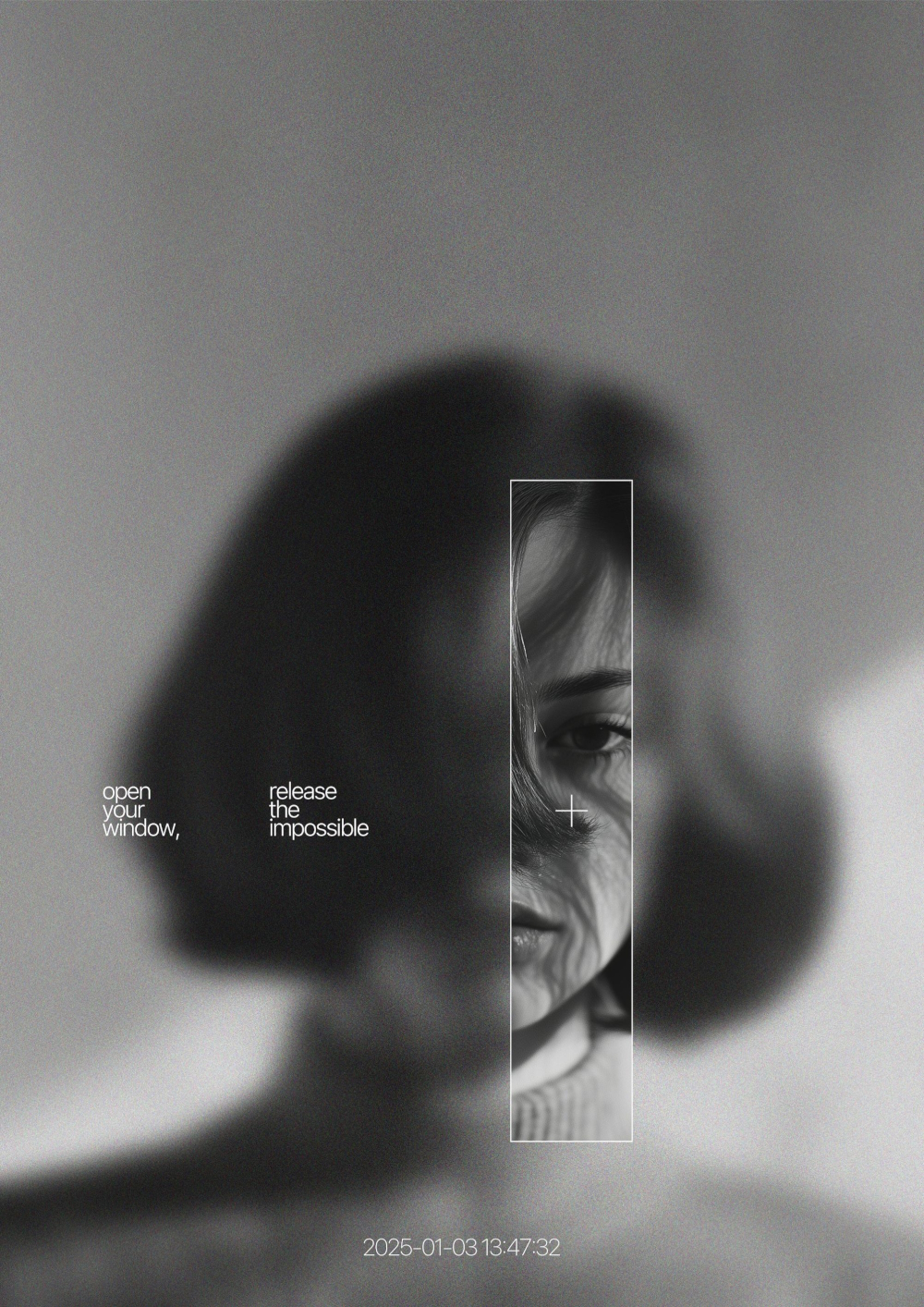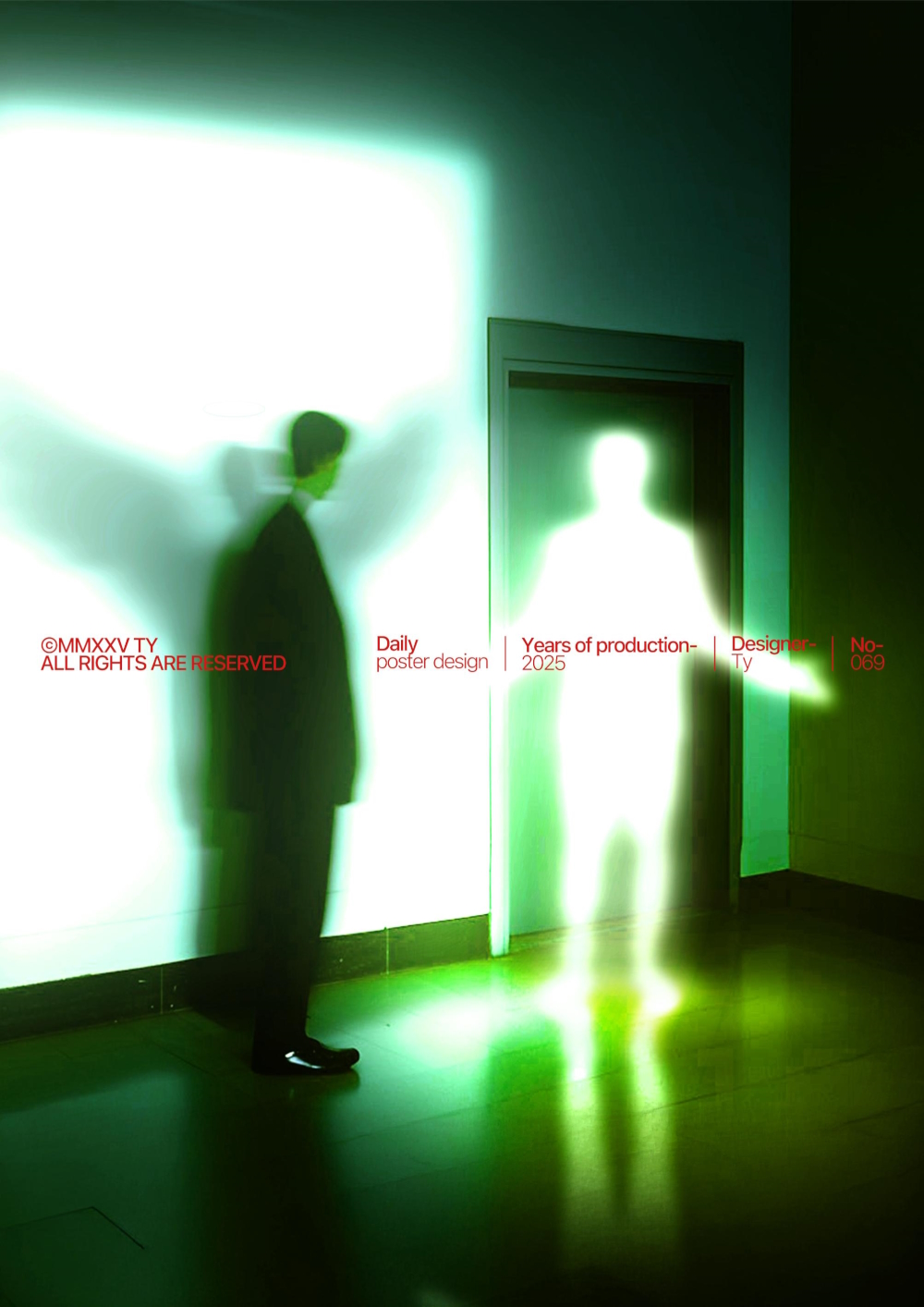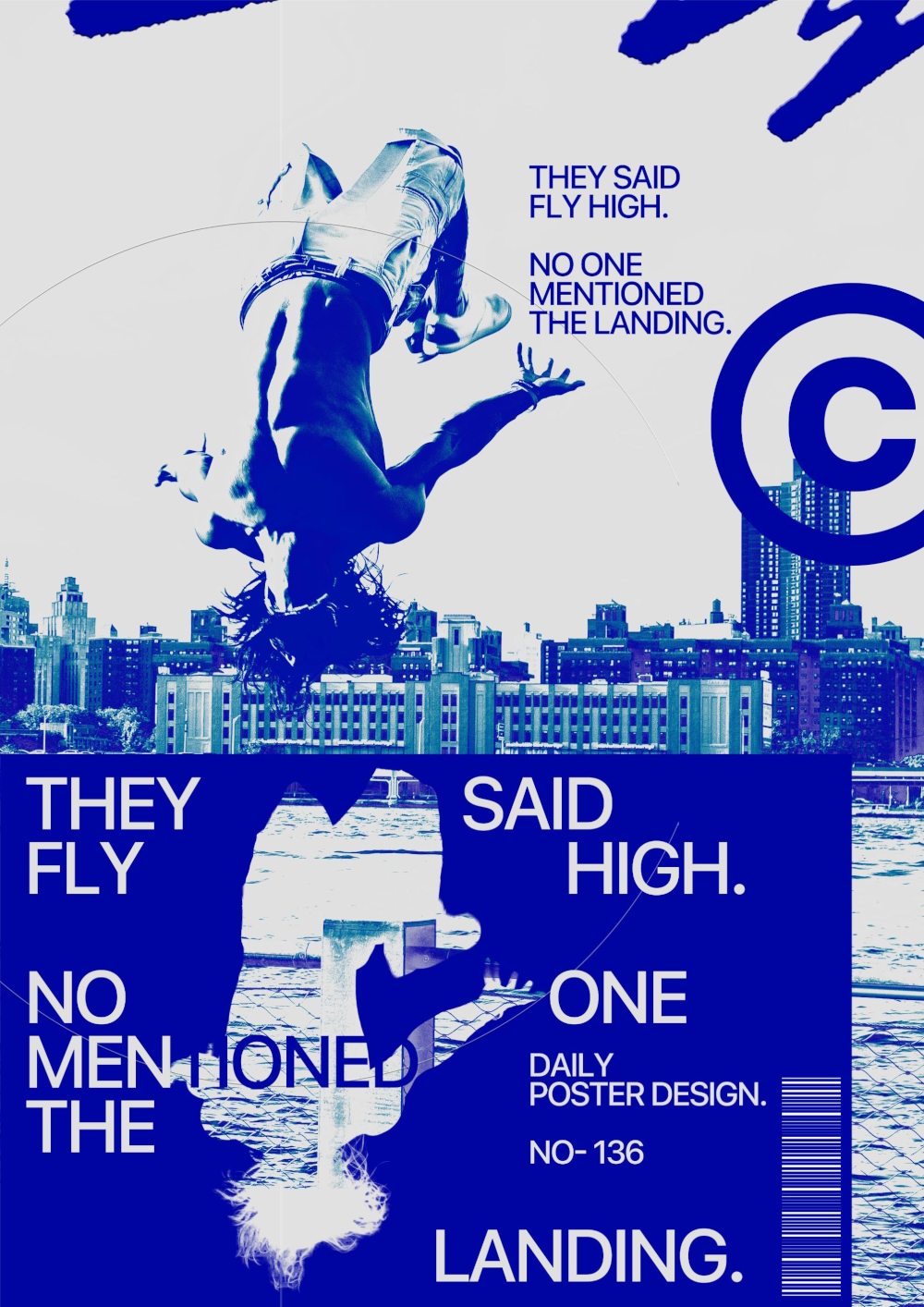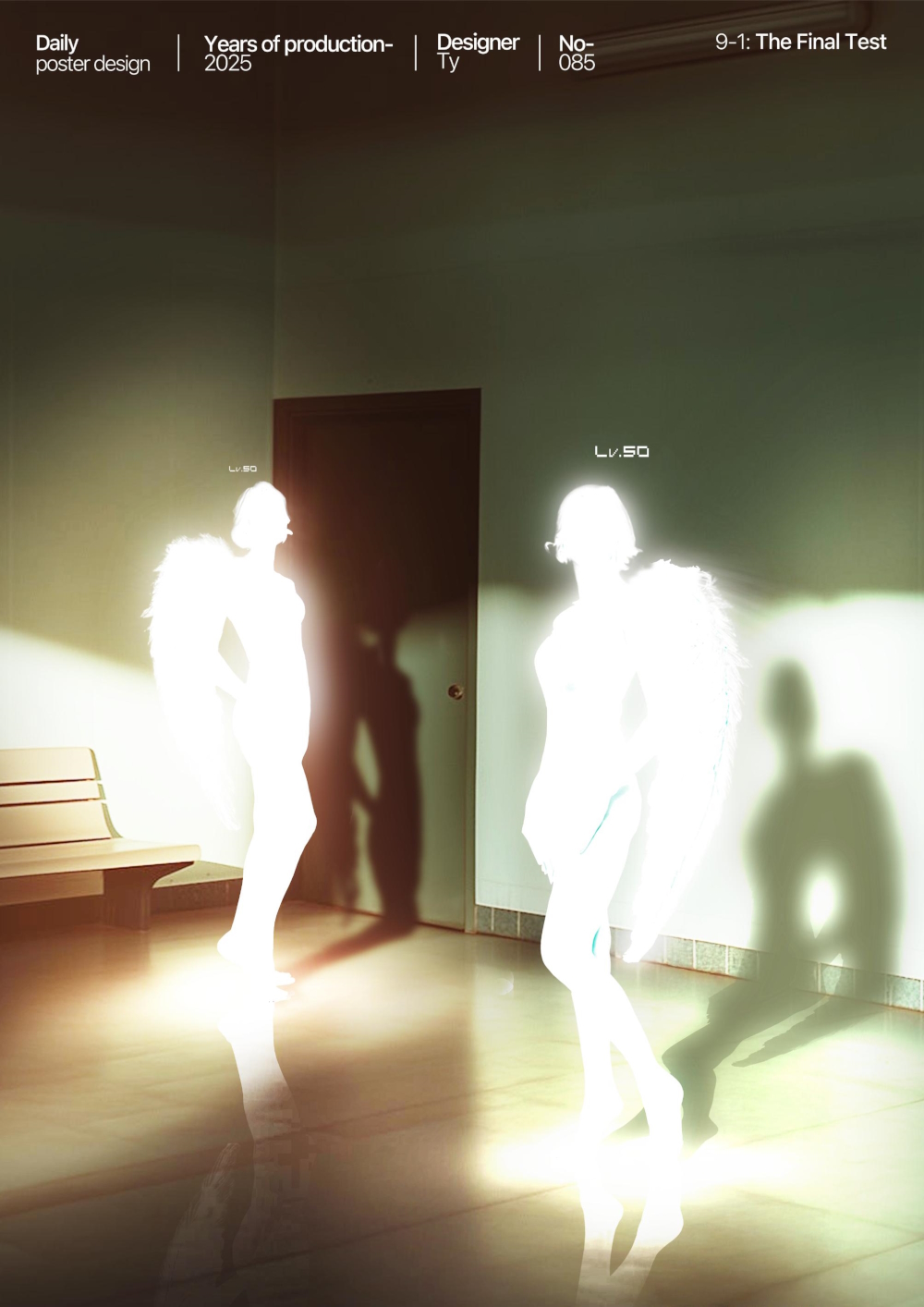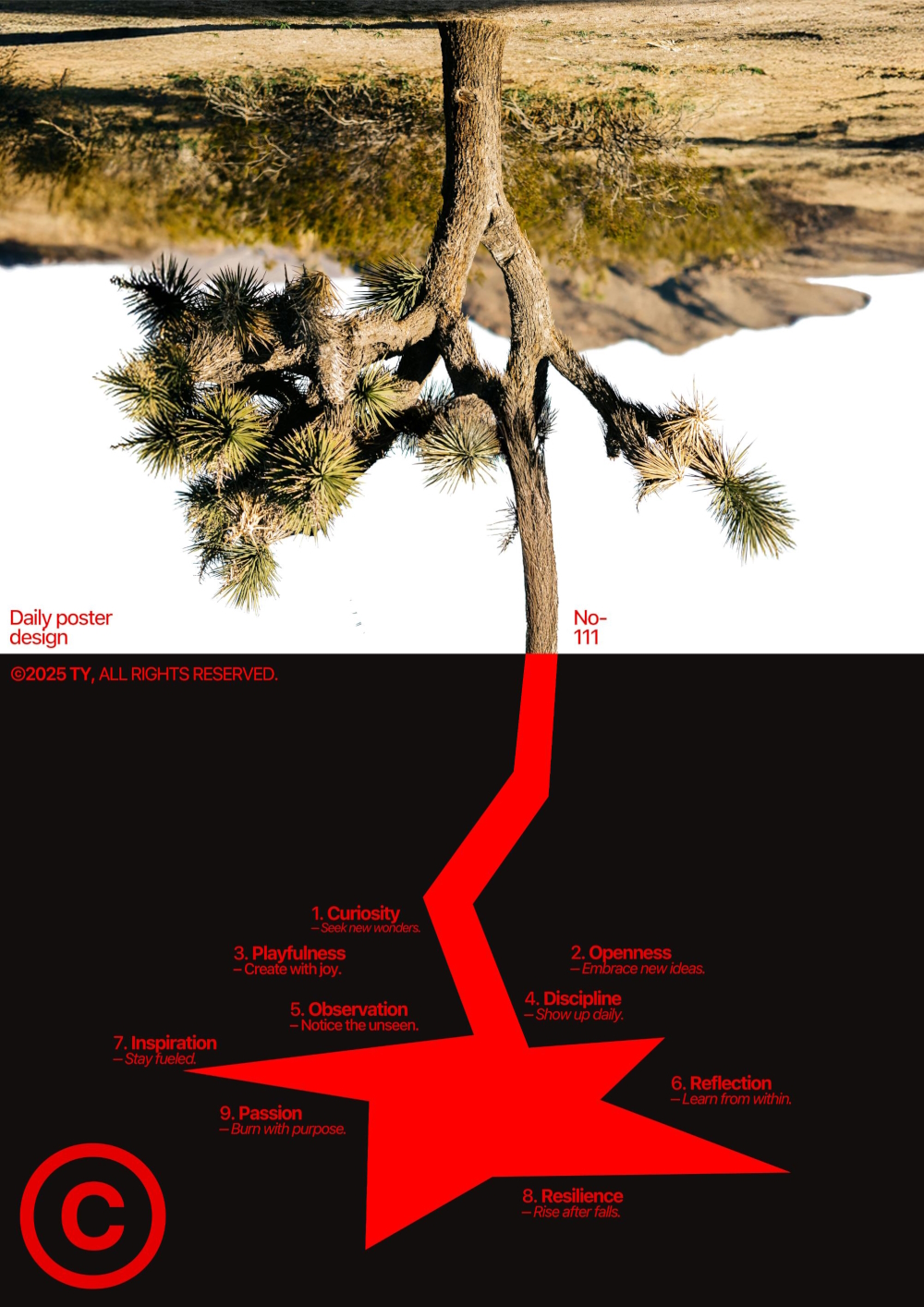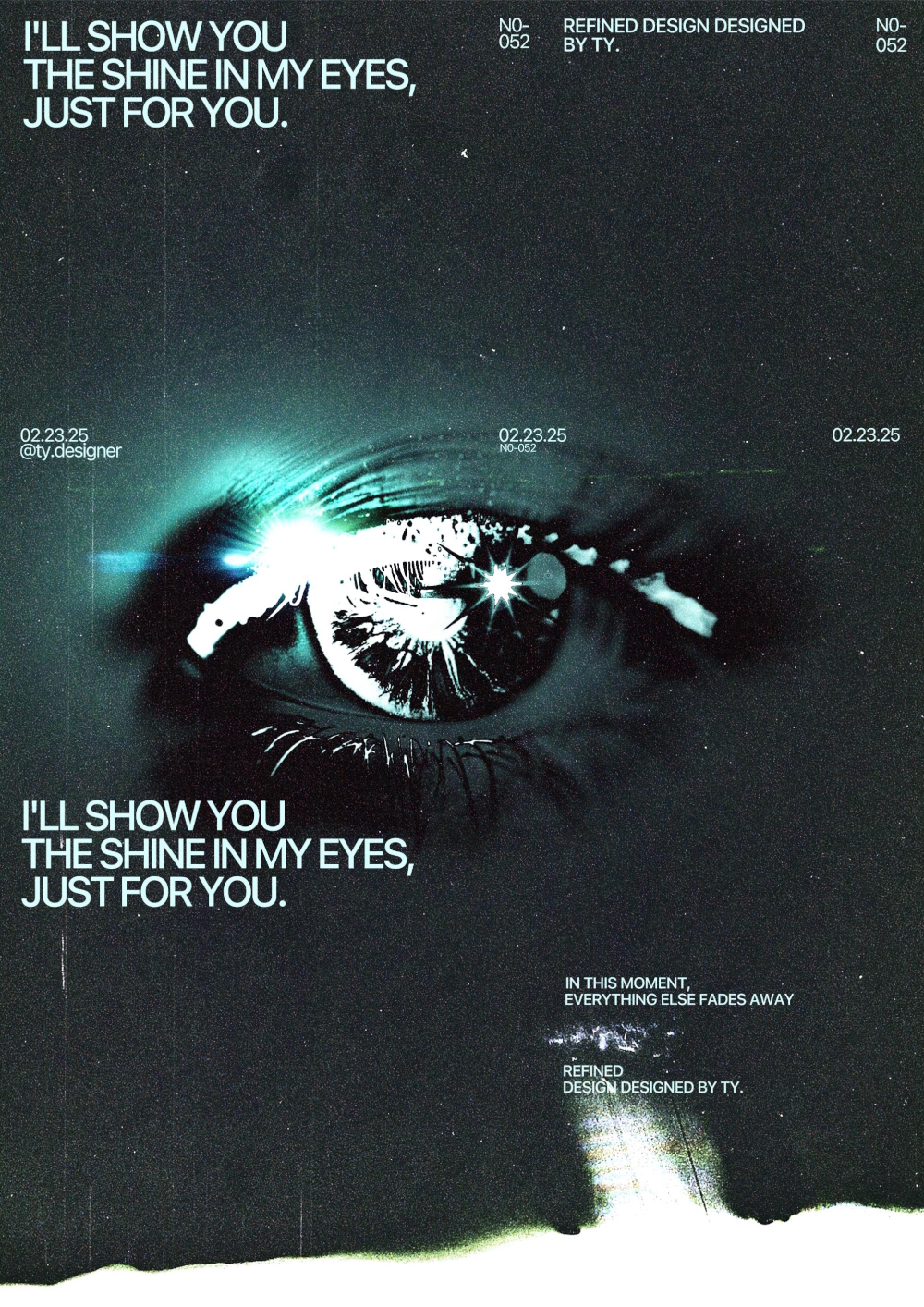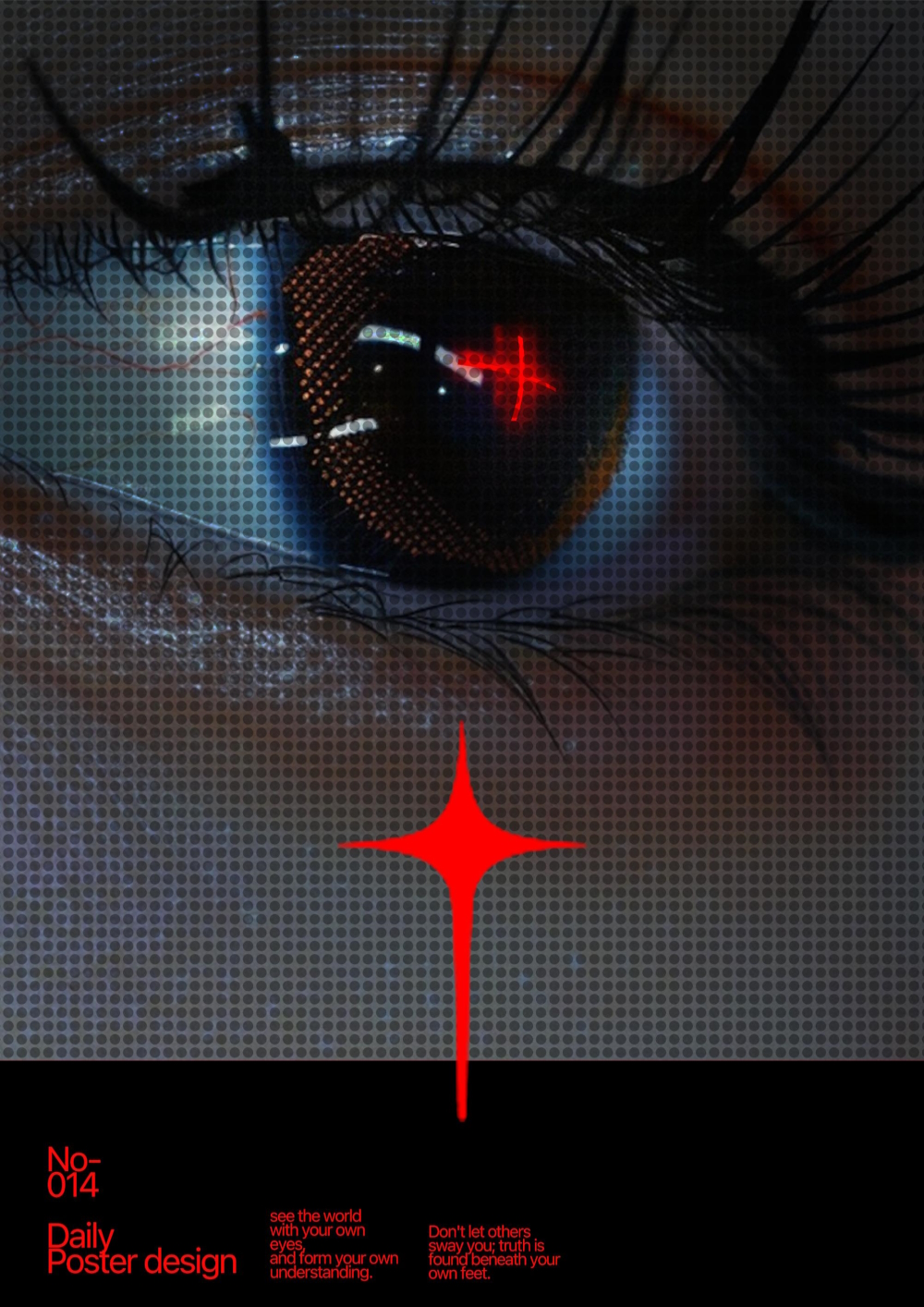Ty Kawabe
graphic designer
Australia / Japan
Crafting a new poster every day since September 23rd, 2024 and because of his „visual diaries“ (WePresent) gathering a huge, constantly growing following online. Noteable: while this young student gets worldwide attention for his extraordinary works already, he’s still in the learning process of graphic design!
Ty Kawabe
graphic designer
Australia / Japan
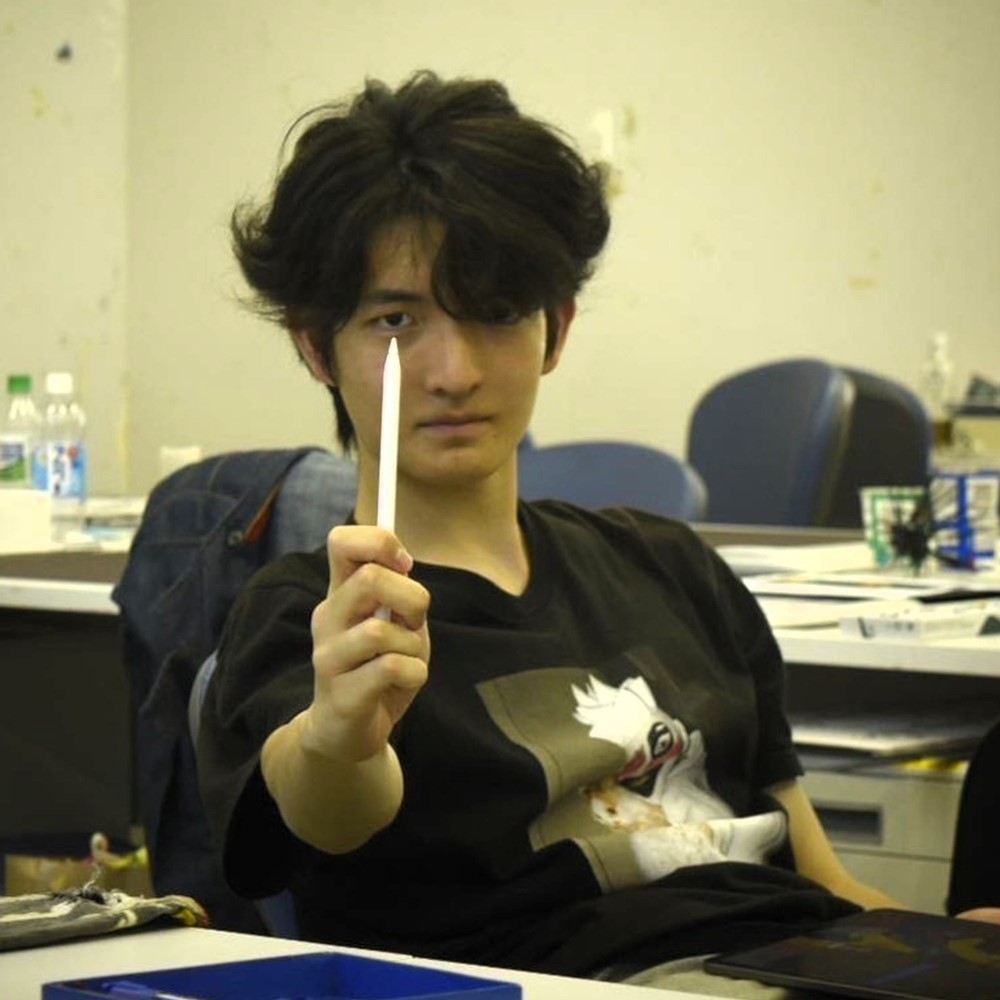
„The exception proves the rule.“ This saying might come to mind for some if they look at this man’s career who belongs to the Gen Z. These people that are born between 1997 and 2010 are often sweepingly condemned for their high financial demands while at the same time focusing on a strict work life balance attitude. Ty Kawabe (* April 1st, 2006 in Melbourne, Australia) is a perfect counterexample. He’s a hard worker who has set himself a strict task: delivering a new poster design on a daily basis!
Ty Kawabe isn’t a kind of child prodigy whose outstanding talents were discovered at a very early age and supported by his parents. The son of a translator, English teacher, investor, and a Clinical Laboratory Technician, moved from Down Under to Japan with his family when he was five years old. Mam and dad were not interested in design much, although his older brother and Ty enjoyed drawing like many kids do. The preference of the latter became concrete when visting Nagoya City University. He first enrolled in Industrial Design, but gradually developed a strong interest in Graphic Design and now studies at the Faculty of Design and Architecture, Department of Industrial Innovation. “I realized design could be a way to communicate ideas, and that really drew me in,” Ty Kawabe is quoted in a feature on the site WePresent by Dutch Internet-based computer file transfer service company WeTransfer. Through his courseworks the student learns many skills and tools of the various aspects of design. With such an ongoing expanding background and being part of the Digital Natives generation this ever curious man started a second creative life outside of the university.
In the autumn of 2025 Ty Kawabe is “specializing in poster design and visual storytelling – blending retro aesthetics with modern layouts. From deeply personal expressions to impactful brand collaboration, each piece resonates with an unique narrative“ (Sooperb.io). Artistic experiments and personal expression are key, „capturing feelings or fleeting thoughts. The messages often include poetic musings, inner dialogue snippets, or motivational phrases that act as reminders or encouragements, both to himself and potentially to others“ (Wepresent.wetransfer.com). „Kawabe’s aesthetic is described as ‚Melancholic Nostalgia‘, aiming to evoke a sense of longing and deep emotional response in viewers. He draws inspiration from everyday moments and other creative designers, using his work as a means to explore and establish his unique style.“
This artist doesn’t keep the developement of his craft skills to himself, but posts tutorials for others to learn from his creative journey.
Ty Kawabe lives and works in the port city Nagoya (Japan).
Interview September 2025
The reverse side of Gen Z: rise to fame by daily poster-design-uploads!
INTUITION/IMAGINATION
?: How does intuition present itself to you – in form of a suspicious impression, a spontaneous visualisation or whatever - maybe in dreams?
Intuition appears to me spontaneously in everyday life.
?: Will any ideas be written down immediately and archived?
Whenever an idea comes, I make sure to capture it immediately, either as a sketch or in text form. Recording the moment is essential.
?: How do you come up with good or extraordinary ideas?
Extraordinary ideas often come from ordinary scenes, but also from impactful events, memorable experiences, or the past.
?: Do you feel that new creative ideas come as a whole or do you get like a little seed of inspiration that evolves into something else and has to be realized by endless trials and errors in form of constant developments until the final result?
They usually appear as a rough visual, which I refine through trial and error until the final result emerges. The same applies to textual ideas — I experiment with how to transform them into visuals.
?: What if there is a deadline, but no intuition? Does the first fuel the latter maybe?
Deadlines don’t generate intuition for me. In fact, pressure often restricts it. Still, I keep sitting at my desk and push myself to think until the very last moment.
INSPIRATION
?: What inspires you and how do you stimulate this special form of imaginativeness?
I’m inspired most by other artists’ works and by my own experiences. When I encounter perspectives or worlds different from my own, I feel a strong creative spark.
?: How do you filter between ideas that are worthwhile pursuing and bad ones that you just let go of?
I decide whether to pursue an idea based on whether it immediately feels beautiful to me.
?: Does an idea need to appeal to you primarily or is its commercial potential an essential factor?
It’s important that an idea is personally appealing, but it also needs to resonate with others. Commercial viability means creating something that many people find beautiful and engaging.
?: Do you revisit old ideas or check what colleagues or competitors are up to at times?
I revisit my past works as sources of inspiration and also study the works of peers to see what I can apply. Whenever an idea stands out, I record it in my notes.
CREATIVITY
?: What time or environment best suits your creative work process — for example, a time and place of tranquility or of pressure?
I work best in quiet environments, whether at home or in a café. Calm surroundings help me focus on design tasks such as daily posters or commissions.
Which path do you take from theory or idea to creation?
Ideas often arise during mundane moments of stillness — in the bath or before sleep. I write them down immediately, either visually or as text, and later develop them into finished visuals. Many of my visuals stem from impactful phrases or messages, which I build into strong images.
?: What’s better in the realization process — for example, speed and forcing creativity by grasping the magic of the moment or a slow, ripening process for implementation and elaboration?
I lean toward speed. Ideas fade quickly, so I believe in shaping them while the impression is still vivid. Taking too long risks drifting away from the original intent.
?: How important are self-doubt and criticism by others during such a process?
Self-doubt is essential. I constantly ask myself, “Is this truly beautiful?” Feedback from others matters, but I only accept what helps me grow.
?: Is it better to be creative on your own, to trust only your own instincts, or to work in a team?
I prefer to create alone, trusting my instincts. Collaboration is difficult for me, but I value feedback as a tool for growth.
?: In case of a creative block or, worse, a real failure, how do you get out of such a hole?
When blocked, I never stop working. I stay at my desk until a new idea comes, because I trust that it will. Even in failure, I move on as if nothing happened and continue forward.
?: Should a creative person always stay true to him- or herself, including taking risks and going against the flow, or must the person, for reasons of commercial survival, make concessions to the demands of the market, the wishes of clients and the audience’s expectations?
For personal work, I believe in staying true to myself and taking risks. But in commercial projects, it’s important to meet the client’s and audience’s expectations.
?: How are innovation and improvement possible if you’ve established a distinctive style? Is it good to be ahead of your time, even if you hazard not being understood?
Innovation comes from continuously seeking new inspiration. That process gradually evolves and refines my style. Even if misunderstood, moving forward with what I want to create is worth the risk.
?: When does the time come to end the creative process, to be content and set the final result free? Or is it always a work-in-progress, with an endless possibility of improvement?
I continue working on a piece until I feel it’s truly complete. To me, there are three phases: when something feels incomplete, when it feels at its most beautiful, and when any further change would ruin it.
?: How does artificial intelligence change human creativity? And do you? Would will you use it at all?
AI can be both helpful and harmful. Used wisely, it expands one’s tools and sources of inspiration. I don’t use it for idea generation, but I do use it to expand images or generate materials I can’t otherwise find.
SUCCESS
“Success is the ability to go from one failure to another with no loss of enthusiasm.” Do you agree with Winston Churchill‘s quote?
I fully agree with Churchill’s quote. To move from one failure to another without losing enthusiasm requires a deep love for what you do and belief in yourself.
?: Should or can you resist the temptation to recycle a ‘formula’ you're successful with?
Reusing a successful formula isn’t wrong, as long as you refine it over time. That refinement is how a personal style develops.
?: Is it desirable to create an ultimate or timeless work? Doesn’t “top of the ladder” bring up the question, “What’s next?” — that is, isn’t such a personal peak “the end”?
Creating a timeless work is worthwhile if it’s something you truly want to do. If it’s forced, it loses value.
Reaching the “top” is not the end. Every achievement brings new goals to pursue.
MY FAVOURITE WORK:
I believe this work represents me the most. The reason is the powerful message, “open your window, release the impossible,” combined with a visual that I believe anyone can find beautiful.
